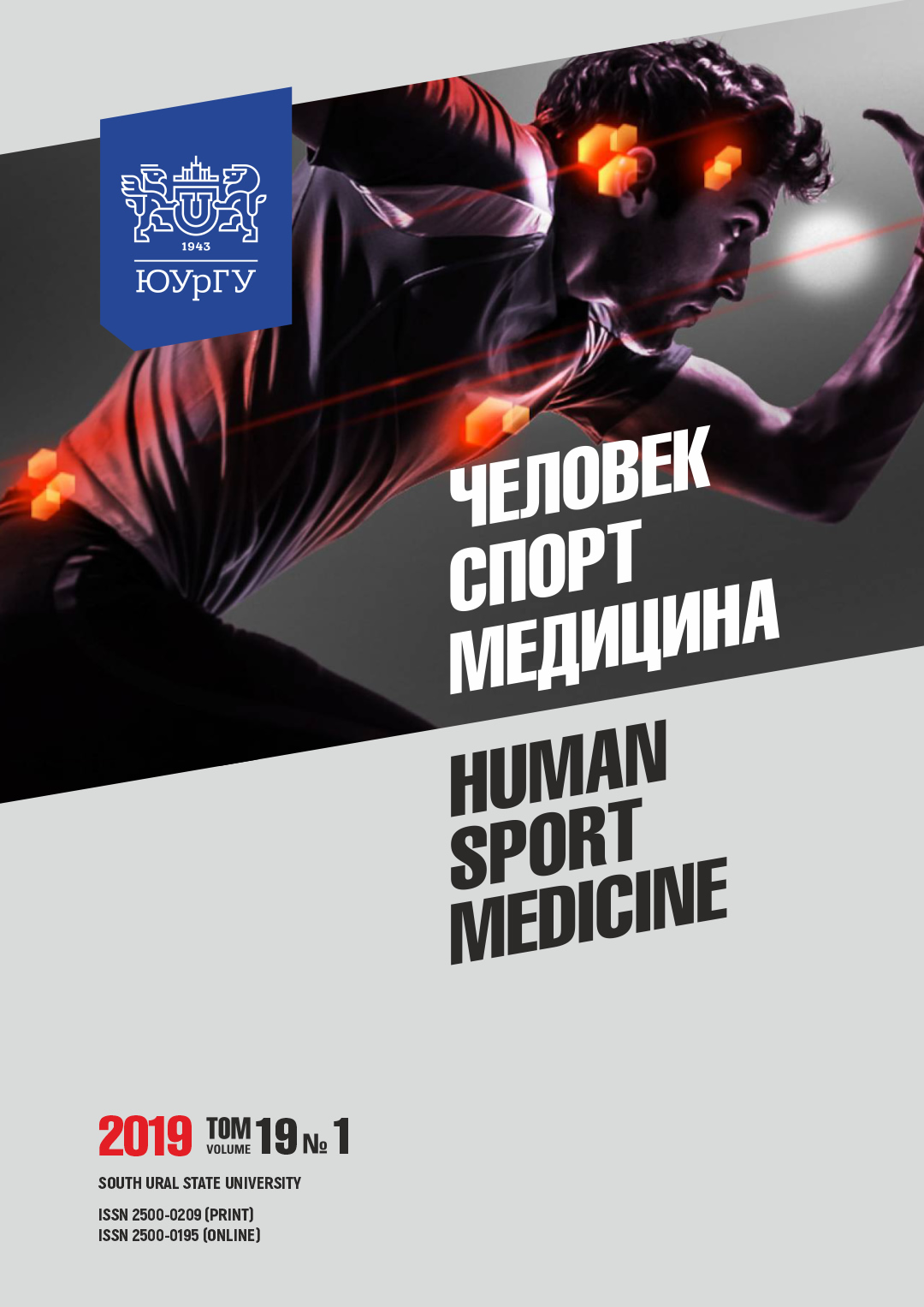PSYCHOPHYSIOLOGICAL FEATURES IN ELITE HOCKEY PLAYERS AGED 15–16
Abstract
Aim. The article deals with studying the features of sensorimotor integration and movement coordination in elite hockey players aged 15–16. Materials and methods. A prospective longitudinal study was performed in the competitive phase of preparation. Hockey players aged 15–16 participated in the study (n = 36; attackers and defenders). The control group consisted of 16-year-old students from the college of physical education (n = 15). We performed an examination with the help of NS-PsychoTest software and hardware equipment (Russia, Neurosoft). We assessed the functional status of cortical centers of the nervous system, as well as the speed and accuracy of simple and complex eye-motor reactions. We determined the level of sensorimotor and voluntary movement coordination with the help of tremorometry. Results. Compared to peers, hockey players aged 15–16 possess a higher level of functional indicators under interference conditions (p < 0.05 in all cases) and a better indicator of the concentration of excitation (p < 0.001). Hockey players are characterized by a better speed and accuracy of reaction under interference conditions (p < 0.001 in all cases) and better reaction to a moving object (p < 0.05 in all cases). Compared to peers not-involved in sports, elite hockey players aged 15–16 are characterized by a higher level of voluntary movement coordination with a static form of muscle contraction (p < 0.01). Conclusion. The specific conditions of the competitive activity of hockey players aged 15–16 contribute to an increase in the efficiency of the central nervous system under interference conditions by improving the concentration of excitation. Sensorimotor integration of the players of this age is also distinguished by better predictive accuracy in reactions to a moving object. The parietal-premotor level of movement regulation in hockey players develops in accordance with age-related features, while specific physical loads influence the improvement of voluntary movement coordination with a static form of muscle contraction.
References
References on translit
Copyright (c) 2019 Human. Sport. Medicine

This work is licensed under a Creative Commons Attribution-NonCommercial-NoDerivatives 4.0 International License.















